production
/viewbook/list/all/?page=26
/
/static/
None
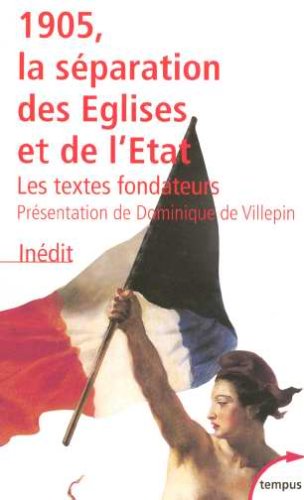
"1905, la separation des églises et de l'Etat ; les textes...
Not Available
Not available
Not available
2262022771
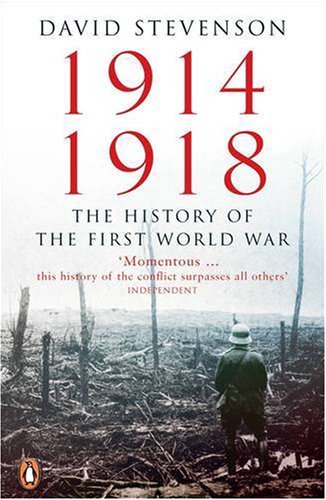
1914-1918: The History of the First World War
D. Stevenson
Penguin Books
Not available
0140268170
In the summer of 1914 Europe exploded into a frenzy of mass violence. The war that followed had global repercussions, destroying four empires and... costing millions of lives. Even the victorious countries were scarred for a generation, and we still today remain within the conflict's shadow. In this major new analysis, published some ninety years after the First World War began, David Stevenson re-examines the causes, course and impact of this 'war to end war', placing it in the context of its era and exposing its underlying dynamics. His book provides a wide-ranging international history, drawing on insights from the latest research. It offers compelling answers to the key questions about how this terrible struggle unfolded: questions that remain disturbingly relevant for our own time.

1919: Volume Two of the U.S.A. Trilogy
John Dos Passos
Mariner Books
Not available
0618056823
With 1919, the second volume of his U.S.A. trilogy, John Dos Passos continues his "vigorous and sweeping panorama of twentieth-century America" (Forum),... lauded on publication of the first volume not only for its scope, but also for its groundbreaking style. Again, employing a host of experimental devices that would inspire a whole new generation of writers to follow, Dos Passos captures the many textures, flavors, and background noises of modern life with a cinematic touch and unparalleled nerve.1919 opens to find America and the world at war, and Dos Passos's characters, many of whom we met in the first volume, are thrown into the snarl. We follow the daughter of a Chicago minister, a wide-eyed Texas girl, a young poet, a radical Jew, and we glimpse Woodrow Wilson, Theodore Roosevelt, and the Unknown Soldier.

1920 Diary
Isaac Babel
Yale University Press
Not available
0300093136
This diary by the famed twentieth-century Russian writer recounts Babel's experiences with the Cossack cavalry during the Polish-Soviet war of... 1919-1920. The basis for Red Cavalry, Babel's best-known work, it records the devastation of the war, the extreme cruelty of the Polish and Red armies alike toward the Jewish population in the Ukraine and eastern Poland, and Babel's own conflicted role as both Soviet revolutionary and Jew.

1926 OSHA Construction Industry Regulations Book (July 2007)
MANCOMM Inc
MANCOMM Inc
Not available
159959059X
Compliance in the construction industry is made easier with this comprehensive 29 CFR 1926 book. Access information, including the 1903... regulations about inspections, citations, and proposed penalties, the 1904 regulations about recording and reporting occupational injuries and illnesses, pertinent 1910 general industry regulations, and all of the 1926 OSHA construction industry regulations. This book is written specifically for construction industry compliance. Also included are the OSHA 300 Log, Sharps Injury Log, incident report forms, and selected OSHA letters of interpretation, as well as a listing of OSHA locations and phone numbers. Find everything you need to meet OSHA standards for the construction industry with this 29 CFR 1926 book. Ships with one full-size 300 Log. Book details: 8.5" x 11" softcover book 475 pages 94 illustrations 133 tables 31 forms Featuring: RegLogic® Part 1903 Part 1904 Part 1910 Selected General Industry Topics OSHA Forms 300, 300A, and 301 OSHA Interpretations Quick-Find IndexTM

1927 and the Rise of Modern America (Cultureamerica)
Charles J. Shindo
Univ Pr of Kansas
Not available
0700617159
When Charles Lindbergh landed at LeBourget Airfield on May 21, 1927, his transatlantic flight symbolized the new era--not only in aviation but also in... American culture. The 1920s proved to be a transitional decade for the United States, shifting the nation from a production-driven economy to a consumption-based one, with adventurous citizens breaking new ground even as many others continued clinging to an outmoded status quo. In his new book, Charles Shindo reveals how one year in particular encapsulated the complexity of this transformation in American culture. Shindo's absorbing look at 1927 shatters the stereotypes of the Roaring '20s as a time of frivolity and excess, revealing instead a society torn between holding on to its glorious past while trying to navigate a brave new world. His book is a compelling and entertaining dissection of the year that has come to represent the apex of 1920s culture, combining references from popular films, music, literature, sports, and politics in a captivating look back at change in the making. As Shindo notes, while Lindbergh's flight was a defining event, there were others: The Jazz Singer, for example, brought sound to the movies, and the 15 millionth Model T rolled off of Ford's assembly line. Meanwhile, the era's supposed live-for-today frivolity was clouded by Prohibition, the revival of the Ku Klux Klan, and the execution of Sacco and Vanzetti. Such events, Shindo explains, reflected a fundamental disquiet running beneath the surface of a nation seeking to accommodate and understand a broad array of changes--from new technology to natural disasters, from women's forays into the electorate to African-Americans' migration to the urban north. Shindo, however, also notes that this was an era of celebrity. He not only examines why Lindbergh and Ford were celebrated but also considers the rise and growing popularity of the infamous, like convicted murderers Ruth Snyder and Judd Gray, and he illuminates the explosive growth of professional sports and stars like baseball's Babe Ruth. In addition, he takes a close look at cinematic heroines like Mary Pickford and the "It" girl Clara Bow to demonstrate the conflicting images of women in popular culture. Distinctive and insightful, Shindo's richly detailed analysis of 1927's key events and personalities reveals the multifaceted ways in which people actually came to grips with change and learned to embrace an increasingly modern America. This book is part of the CultureAmerica series.
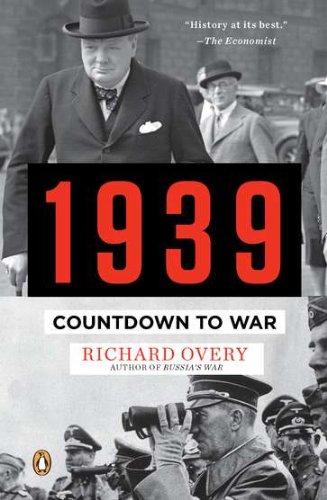
1939: Countdown to War
Richard Overy
Penguin Books
Not available
0143120069
"Overy's book is easily the best account of Europe's descent into...death and destruction." --Evening Standard (London)A brilliantly concise narrative... of the days leading to the outbreak of history's greatest conflagration, 1939 takes readers hour by hour through the nail-biting decisions that determined the fate of millions. Richard Overy, a leading historian of the period, masterfully recreates the jockeying for advantage that set Europe's greatest powers on a collision course. Would Stalin join Hitler in a bid to divide Poland and flout the West? Would Britain and France succeed in forcing Germany to reason? And how far would a defiant Poland push its claim to exist? In the summer of 1939, the course of events was anything but assured, as this exceptionally absorbing book drives home.
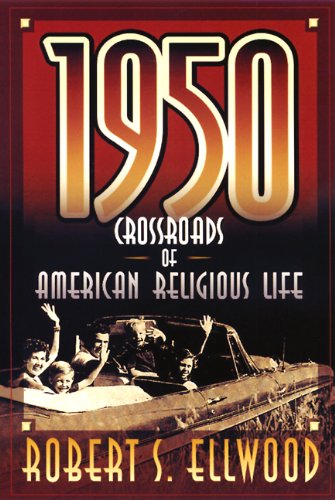
1950: Crossroads of American Religious Life
Robert S. Ellwood
Westminster John Knox Press
Not available
0664258131
The year 1950 saw the height of the postwar religious boom in America and also the depths of the Cold War. It was a year when religious enthusiasm and... postwar affluence coexisted with anxiety about global communism and an ever-present nuclear threat. McCarthyism, the advent of the hydrogen bomb, and the onset of the Korean War provoked ardent and diverse responses from religious leaders and occasioned lively debate in flourishing religious journalism. Robert Ellwood's 1950 is a cultural time capsule, recovering the impetus for many of today's trends, remembering endings and beginnings, and documenting many other developments in American religious life of fifty years ago. It highlights the parallels and divergences between religious culture then and now.
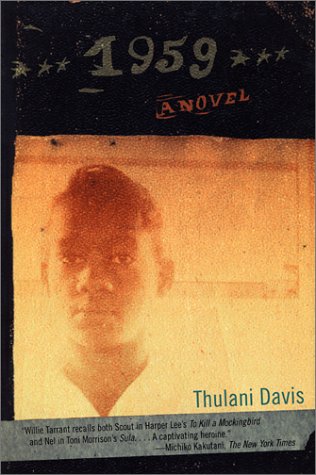
1959: A Novel
Thulani Davis
Grove Press
Not available
0802138314
Thulani Davis's 1959 is a powerful, poignant coming-of-age novel that captures a dramatic moment in American history as clearly as a photograph. It's... the summer of 1959 and Willie Tarrant of Turner, Virginia, is twelve. Her father and other adults in the town are worried about integration -- how it will affect their children's safety and the quality of their education -- but for Willie it's just another problem she's going to have to deal with, like her chores and beginning to go out with boys. Willie and her friends -- kids from good families with good grades -- are being groomed to be sent in the first wave. Before this can happen, though, eight black college students, wearing suits and fresh haircuts, go into the Woolworth's lunch counter -- changing everything. In 1959 one of the most talented writers of her generation has written a book that will become a classic of civil rights literature.
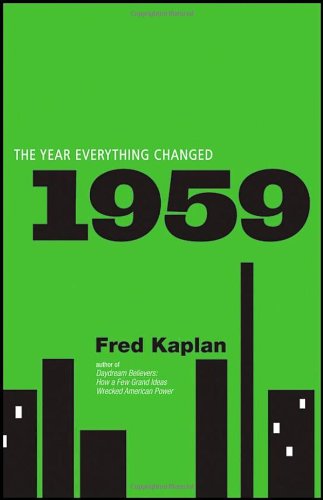
1959: The Year Everything Changed
Fred Kaplan
Wiley
Not available
0470602031
Acclaimed national security columnist and noted cultural critic Fred Kaplan looks past the 1960s to the year that really changed AmericaWhile... conventional accounts focus on the sixties as the era of pivotal change that swept the nation, Fred Kaplan argues that it was 1959 that ushered in the wave of tremendous cultural, political, and scientific shifts that would play out in the decades that followed. Pop culture exploded in upheaval with the rise of artists like Jasper Johns, Norman Mailer, Allen Ginsberg, and Miles Davis. Court rulings unshackled previously banned books. Political power broadened with the onset of Civil Rights laws and protests. The sexual and feminist revolutions took their first steps with the birth control pill. America entered the war in Vietnam, and a new style in superpower diplomacy took hold. The invention of the microchip and the Space Race put a new twist on the frontier myth.Vividly chronicles 1959 as a vital, overlooked year that set the world as we know it in motion, spearheading immense political, scientific, and cultural changeStrong critical acclaim: "Energetic and engaging" (Washington Post); "Immensely enjoyable . . . a first-rate book" (New Yorker); "Lively and filled with often funny anecdotes" (Publishers Weekly)Draws fascinating parallels between the country in 1959 and todayDrawing fascinating parallels between the country in 1959 and today, Kaplan offers a smart, cogent, and deeply researched take on a vital, overlooked period in American history.
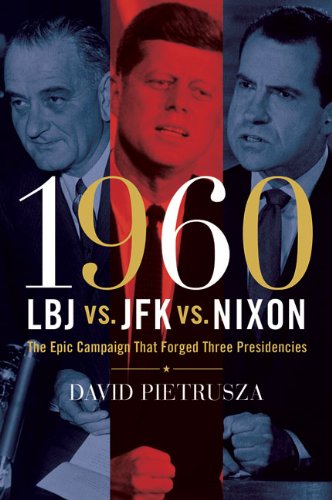
1960--LBJ vs. JFK vs. Nixon: The Epic Campaign That Forged Three...
David Pietrusza
Union Square Press
Not available
1402777469
Three Presidents, three giants--one election.A thousand secrets.Round One of 1960's electrifying presidential contest pits charismatic upstart John... Kennedy's blend of Harvard eloquence, social register style, and dashing vigor against molasses-drawl Senate power broker Lyndon's Johnson mercurial mix of overbearing Texas bluster and maddening indecision.Kennedy versus Johnson--the cool patrician versus the manic cowboy.Round Two pits JFK--dashing yet flawed in ways kept carefully hidden for an adoring public--head-to-head, down-to-the wire, against lone-wolf Richard Nixon's brooding, ultimately-damned, quest for political power and personal validation.Nixon versus Kennedy--Uriah Heep versus Dorian Gray.The election, the year, the experience, its sights and soundbites, slogans and hopes and fears, remain indelibly in our collective memory, vivid as ever, a presidential drama exceeding fiction's bounds, presenting not merely the grandest of characters, but the most astonishing of plot twists, the sharpest confrontations, mobsters and molls, brains and bribes, the most eloquent and compelling of dialogue, eternal truths and convenient lies.And, when the ultimate cliff-hanger ending of twentieth century politics hurtles to its exhausted conclusion, its warring tickets find themselves separated by only two tenths of a single percentage point of the popular vote--and the Mayor of Chicago.1960's legendary contest remains unsurpassed for color, personality, and continuing historical significance.1960 created the world we live in today.1960 marked the triumph of tolerance over decades of ingrained anti-Catholic bigotry.1960 witnessed a spectacular infusion of idealism, style, and glamour into politics--PT-109 and the birth of New Frontier, frenzied crowds storming the first "rock-star" candidate, the turbulent sunrise of Camelot's storied thousand days.1960 also witnessed back-alley, bare-knuckle politics--big money and back-room deals, threats and broken promises, brutal, murderous mobsters and pious hypocrites.In other words--politics as usual.1960 ushered in television's unquestioned political domination, massively increased emphasis on TV news coverage and advertising and, above all, a quartet of riveting televised presidential debates staged before 77 million viewers, seizing the collective national imagination, forever altering American perceptions of politics and, indeed, of the presidency itself. The old machines were dead. Television--"the new machine"--was king.1960 witnessed Martin Luther King's civil rights movement reach maturity and take national center stage, the sit-in phenomenon, King's sentencing to a brutal Georgia prison camp, and how JFK's very much spontaneous and very human intervention triggered King's release--and changed the course of the election.1960 saw a ruthless multi-millionaire, his fortune made in predatory capitalism, bootlegging and stock manipulation, his own dreams of political power long ago destroyed, too controversial to seek any office for himself, skillfully maneuver his charismatic son into the highest of all of all offices.1960 pitted Democrats and Republicans in nip-and-tuck combat for a solid year, at most a percentage point or two separating them. Among the most dramatic electoral cliffhangers ever--even without a final dollop of fraud.But above all, 1960 pitted a warring trio of legendary, unique and totally different personalities--John Fitzgerald Kennedy, Richard M. Nixon, and Lyndon Baines Johnson--three imperfect, all-too-human, giants scrambling and scheming and clawing for the presidency of the United States. How they battled, how they warily saw each other, their strategies, their alliances, their ambitions, their ideals and scandals and compromises, their strengths and tragic flaws are all forcefully chronicled in 1960--LBJ vs. JFK vs. Nixon: The Epic Campaign that Forged Three Presidencies.
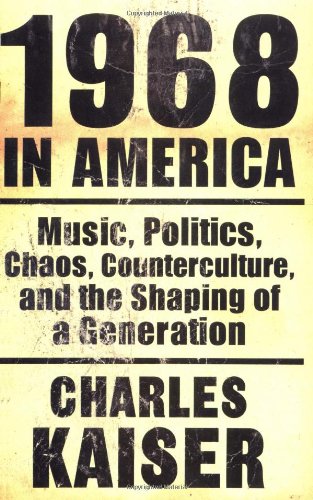
1968 in America: Music, Politics, Chaos, Counterculture, and the...
Charles Kaiser
Grove Press
Not available
0802135307
Charles Kaiser’s 1968 in America is widely recognized as one of the best historical accounts of the 1960s. This book devotes equal attention to the... personal and the political and speaks with authority about such diverse figures as Bob Dylan, Eugene McCarthy, Janis Joplin, and Lyndon Johnson.

1968 in Europe: A History of Protest and Activism, 1956-1977...
Martin Klimke
Palgrave Macmillan
Not available
0230606202
A concise reference for researchers on the protest movements of the 1960s and 1970s, this book covers the history of the various national protest... movements, the transnational aspects of these movements, and the common narratives and cultures of memory surrounding them. www.1968ineurope.com
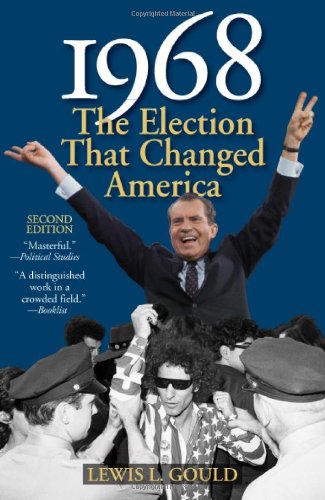
1968: The Election That Changed America (American Ways Series)
Lewis L. Gould
Ivan R. Dee
Not available
1566638623
The race for the White House in 1968 was a watershed event in American politics. In this brilliantly succinct narrative analysis, Lewis L. Gould shows... how the events of that tumultuous year changed the way Americans felt about politics and their national leaders; how Republicans used the skills they brought to Richard Nixon's campaign to create a generation-long ascendancy in presidential politics; and how Democrats, divided and torn after 1968, emerged as only crippled challengers for the White House throughout most of the years until the early twenty-first century. Bitterness over racial issues and the Vietnam War that marked the 1968 election continued to shape national affairs and to rile American society for years afterward. And the election accelerated an erosion of confidence in American institutions that has not yet reached a conclusion. In his lucid account, now revised and updated, Mr. Gould emphasizes the importance of race as the campaign's key issue and examines the now infamous "October surprises" of Lyndon Johnson and Richard Nixon as he describes the extraordinary events of what Eugene McCarthy later called the "Hard Year."
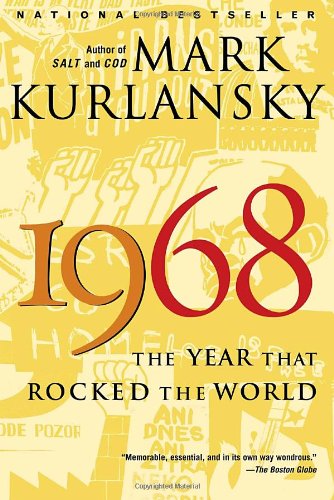
1968: The Year That Rocked the World
Mark Kurlansky
Random House Trade Paperbacks
Not available
0345455827
To some, 1968 was the year of sex, drugs, and rock and roll. Yet it was also the year of the Martin Luther King, Jr., and Bobby Kennedy assassinations;... the riots at the Democratic National Convention in Chicago; Prague Spring; the antiwar movement and the Tet Offensive; Black Power; the generation gap; avant-garde theater; the upsurge of the women’s movement; and the beginning of the end for the Soviet Union. In this monumental book, Mark Kurlansky brings to teeming life the cultural and political history of that pivotal year, when television’s influence on global events first became apparent, and spontaneous uprisings occurred simultaneously around the world. Encompassing the diverse realms of youth and music, politics and war, economics and the media, 1968 shows how twelve volatile months transformed who we were as a people–and led us to where we are today.
 '
'





